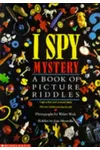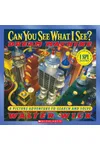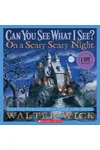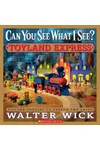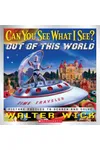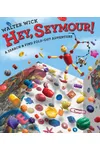Picture a photographer who turned everyday objects into mesmerizing treasure hunts—meet Walter Wick! This American artist and writer has enchanted millions with his visually stunning 'I Spy' and 'Can You See What I See?' series, blending photography, puzzles, and education into children’s literature gold. From his Miami Beach studio, Wick crafts intricate scenes that spark curiosity and wonder in young readers.
Born in Hartford, Connecticut, Wick’s journey to becoming a visual storyteller is as captivating as his books. His knack for capturing the extraordinary in the ordinary has made him a beloved figure in children’s literature, with millions of copies sold and awards aplenty.
The Making of Walter Wick
Walter Wick was born on February 23, 1953, in Hartford, Connecticut, and grew up in rural East Granby. His brother sparked his love for photography, leading him to study photojournalism at the Paier College of Art. After graduating, Wick moved to New York, diving into commercial photography. He shot magazine covers and created puzzles for Games magazine, honing his eye for detail. In 1991, a fateful collaboration with writer Jean Marzollo birthed the 'I Spy' series, catapulting him into children’s literature stardom.
Walter Wick’s Unforgettable Stories
Wick’s 'I Spy' series, starting with 'I Spy: A Book of Picture Riddles' in 1992, revolutionized search-and-find books. Each page bursts with meticulously arranged objects—think toys, buttons, and pinecones—paired with Marzollo’s rhyming riddles. Titles like 'I Spy Christmas' and 'I Spy Spooky Night' weave thematic magic, captivating kids and adults alike. The series’ success lies in Wick’s ability to transform mundane items into intricate, imaginative worlds.
In 2002, Wick launched 'Can You See What I See?', a solo venture with even more complex puzzles. Books like 'Can You See What I See?: Treasure Ship' and 'Hidden Wonders' introduce optical illusions and narrative depth, challenging readers to spot hidden treasures. His 1997 book 'A Drop of Water' showcases his versatility, using stunning macro photography to explain scientific concepts like surface tension. Wick’s style—vivid, detailed, and accessible—makes learning feel like play.
Wick’s process is as fascinating as his books. He spends weeks building sets, using everything from blocks to custom-made models. Originally shooting with an 8x10 large-format camera, he switched to digital in 2004, maintaining his signature clarity. Each book takes about a year to complete, a testament to his dedication to visual storytelling.
Why Walter Wick Matters
Walter Wick’s impact on children’s literature is profound. His books, with over 75 million copies in print, have made learning interactive and fun, fostering visual literacy and critical thinking. The 'I Spy' series inspired a generation of hidden-object games and remains a classroom staple. Awards like the Boston Globe-Horn Book Prize for 'A Drop of Water' and a New York Times nod for 'Walter Wick’s Optical Tricks' underscore his influence. Wick’s work transcends entertainment, inviting readers to see the world with fresh eyes.
About Walter Wick
- Born: February 23, 1953, Hartford, Connecticut
- Key Works: 'I Spy: A Book of Picture Riddles,' 'Can You See What I See?: Treasure Ship,' 'A Drop of Water'
- Awards: Boston Globe-Horn Book Prize, New York Times Best Illustrated Book
- Fun Fact: Wick and his wife transformed a 1920s firehouse into their art studio!
Ready to get lost in a visual adventure? Grab 'I Spy: A Book of Picture Riddles' or 'Can You See What I See?: Hidden Wonders' and dive into Walter Wick’s playful, puzzle-packed world!
